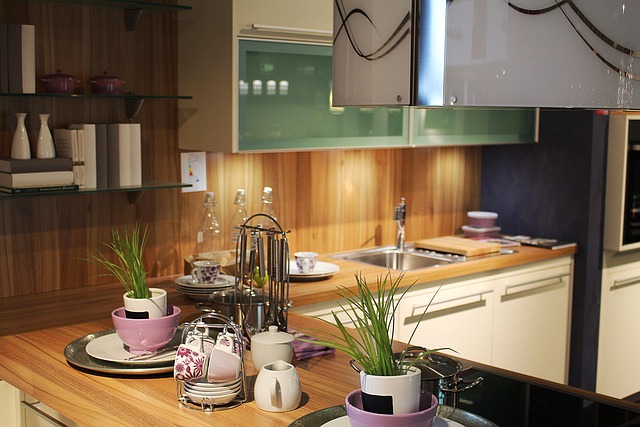Achieve Clutter-Free Kitchen Ideas with Neutral Color Palettes
Neutral color palettes, including whites, grays, and beiges, are transforming kitchens into calming,…….
Introduction
The concept of a kitchen remodel tailored for minimalist living has gained prominence as a response to the growing desire for efficiency, simplicity, and sustainability in home design. This article delves into the essence of a minimalist kitchen remodel, its benefits, and how it aligns with contemporary lifestyles. We will explore its historical context, the global impact on design trends, economic considerations, technological advancements, policy implications, and the challenges that come with embracing this philosophy in home renovation. By understanding these elements, readers can grasp the significance of a minimalist kitchen remodel within the broader landscape of modern living spaces.
Understanding Kitchen Remodel for Minimalist Living
A kitchen remodeled for minimalist living is characterized by its uncluttered space, functional design, and intentional use of materials and appliances. It emphasizes simplicity, quality, and purpose over quantity and extravagance. The core components include streamlined cabinetry, integrated appliances, ample storage, and open layouts that promote a serene cooking environment. Historically, the minimalist movement has its roots in various design philosophies, including the Bauhaus school of thought, which advocated for functionality and simplicity in design.
Global Impact and Trends
The influence of minimalist kitchen design is evident worldwide, with regional adaptations reflecting cultural practices and local materials. In Scandinavia, for example, minimalism aligns with the principles of Lagom, which promotes balance and moderation. In Japan, the concept of ‘Ma’ (negative space) is incorporated into minimalist designs, emphasizing spatial awareness and tranquility. Global trends show a shift towards sustainability and eco-friendly materials, with consumers prioritizing longevity and adaptability in their kitchen spaces.
Economic Considerations
Economically, a kitchen remodel for minimalist living can be a strategic investment. It often involves a higher upfront cost due to the quality and durability of materials used. However, this initial investment can lead to long-term savings by reducing the need for frequent replacements or upgrades. Market dynamics indicate a growing segment of consumers who value sustainability and are willing to invest in high-quality, long-lasting products. This trend influences economic patterns, with a shift towards artisanal, locally-sourced materials and craftsmanship.
Technological Advancements
Technological advancements have significantly impacted minimalist kitchen design. Smart appliances that blend seamlessly into the aesthetic while offering advanced features represent a notable trend. The integration of home automation systems allows for control over lighting, temperature, and even food preparation processes, enhancing both functionality and convenience without compromising the minimalist ethos. Future potential includes advancements in sustainable energy sources and bio-based materials that align with the minimalist philosophy of reducing environmental impact.
Policy and Regulation
Policies and regulations play a crucial role in shaping the minimalist kitchen design landscape. Building codes, health and safety standards, and environmental regulations all influence the design and functionality of kitchen remodels. In regions with stringent energy efficiency requirements, minimalist designs that focus on reducing waste and conserving energy are more prevalent. International bodies like the International Code Council (ICC) and the Leadership in Energy and Environmental Design (LEED) certification provide frameworks that guide sustainable design practices.
Challenges and Criticisms
One of the main challenges in adopting a minimalist kitchen remodel is balancing aesthetics with practicality. Critics argue that minimalism can sometimes lead to sacrificing necessary functionality for the sake of style. To overcome these issues, designers and homeowners must prioritize versatility and adaptability in their designs. Solutions include multi-functional appliances and furniture that can be easily reconfigured to meet changing needs. Another challenge is the cost, as high-quality materials and bespoke design can be expensive. Addressing this requires a focus on accessible design options that do not compromise on minimalist principles.
Case Studies
Several case studies illustrate successful implementations of minimalist kitchen remodels. A notable example is the ‘Loop’ kitchen by IKEA, which incorporates circular design principles to minimize waste and promote sustainability. Another is the ‘Natural Home’ project in the UK, which showcases a self-sufficient home with a minimalist kitchen design that maximizes natural light and space. These case studies provide valuable insights into the practical application of minimalist principles in kitchen design and the lessons learned from them.
Future Prospects
The future of kitchen remodel for minimalist living is bright, with potential growth areas focusing on sustainability, personalization, and integration of technology. Emerging trends include the use of biodegradable materials, modular designs that can be easily updated or changed, and smart appliances that are energy-efficient and self-cleaning. Strategic considerations for the future involve addressing the affordability and accessibility of minimalist designs to a broader audience while maintaining the core values of simplicity, functionality, and quality.
Conclusion
A kitchen remodel for minimalist living represents a thoughtful approach to design that prioritizes function, sustainability, and a harmonious environment. By understanding the global impact, economic considerations, technological advancements, and policy regulations, homeowners can make informed decisions that align with their lifestyle and values. The future of kitchen design is poised to embrace minimalism as a timeless philosophy that adapts to changing needs while maintaining its commitment to quality and simplicity.
(Note: This outline provides a comprehensive guide for a kitchen remodel focused on minimalist living. Each section can be expanded with more detailed information, case studies, and visual examples to create a rich and informative resource for homeowners and designers alike.)

Neutral color palettes, including whites, grays, and beiges, are transforming kitchens into calming,…….

A kitchen remodel focused on minimalism leverages natural light through large windows, enhancing aes…….

A minimalist kitchen remodel focuses on open spaces, smart storage, and neutral color palettes for a…….

The modern minimalist kitchen layout emphasizes simplicity, clarity, and functionality, creating a h…….

Creating a modern minimalist kitchen involves a balanced color palette of neutral tones like white,…….

Minimalist cabinetry focuses on simplicity, functionality, and space optimization through clean line…….

Minimalist kitchen design prioritizes simplicity, clean lines, and uncluttered spaces, fostering ser…….

A sleek kitchen remodel is gaining popularity for its calming, minimalist design that prioritizes fu…….